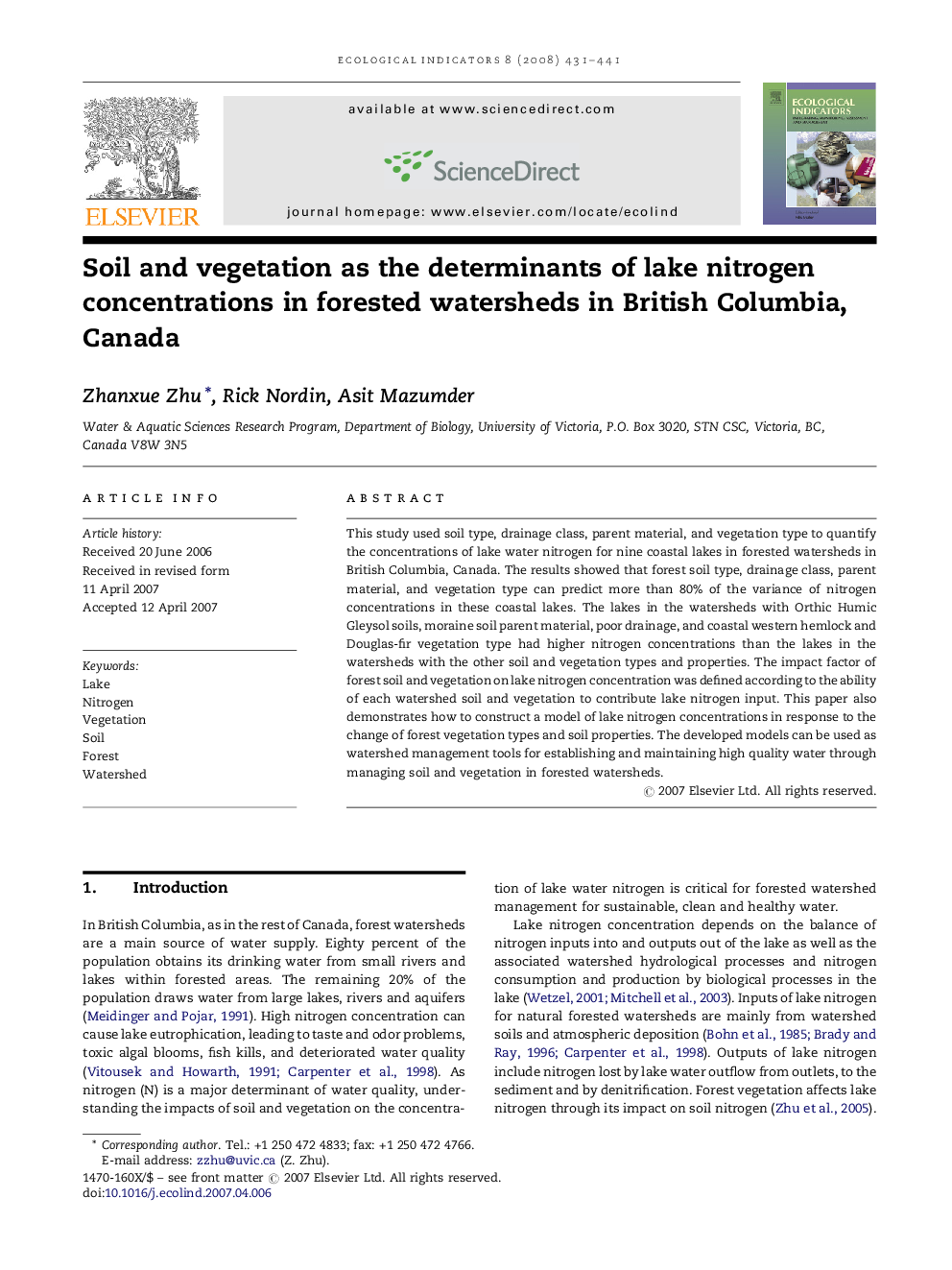| Article ID | Journal | Published Year | Pages | File Type |
|---|---|---|---|---|
| 4374387 | Ecological Indicators | 2008 | 11 Pages |
This study used soil type, drainage class, parent material, and vegetation type to quantify the concentrations of lake water nitrogen for nine coastal lakes in forested watersheds in British Columbia, Canada. The results showed that forest soil type, drainage class, parent material, and vegetation type can predict more than 80% of the variance of nitrogen concentrations in these coastal lakes. The lakes in the watersheds with Orthic Humic Gleysol soils, moraine soil parent material, poor drainage, and coastal western hemlock and Douglas-fir vegetation type had higher nitrogen concentrations than the lakes in the watersheds with the other soil and vegetation types and properties. The impact factor of forest soil and vegetation on lake nitrogen concentration was defined according to the ability of each watershed soil and vegetation to contribute lake nitrogen input. This paper also demonstrates how to construct a model of lake nitrogen concentrations in response to the change of forest vegetation types and soil properties. The developed models can be used as watershed management tools for establishing and maintaining high quality water through managing soil and vegetation in forested watersheds.
